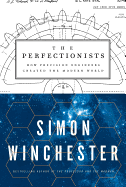
Precision is a fact of modern-day life. While we are "peppered and larded and salted and perfumed with precision," we're also hard pressed to define what it actually means, not to mention how significantly (and quickly) it has changed the course of human history. With bestselling author Simon Winchester (Atlantic) as guide, the marvels of precision engineering bloom.
Winchester begins chronologically with the development of the steam engine, discovered and made efficient by Englishmen John Wilkinson and James Watt, and heralding the Industrial Revolution. Soon after, the "paradigm-altering idea of interchangeable parts" emerged; weapons and warfare would never be the same. The budding automotive industry also took note. While Britain's Rolls Royce was proudly meticulous in making cars, it was Henry Ford's assembly lines that made the Model-T ubiquitous by embracing mass production--shifting the pursuit of even greater exactness to the United States. Soon, the jet engine would change air travel and GPS would guarantee accuracy of a location within mere centimeters.
Populated with colorful characters (including a duplicitous Eli Whitney and sharp-shooting Queen Victoria), notable failures (Hubble Space Telescope's first flawed mirror) and contradictions (our persistent desire for the handmade and imperfect), Winchester's tour of modern engineering is never dull. Looking ahead, where "electrons and protons and neutrons have replaced iron and oil and bearings and lubricants and trunnions," Winchester considers a future where the fundamental core of our very existence is altered by our never-ending quest for perfection. -- Frank Brasile, librarian

